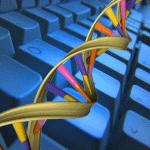Bioinformatics
|
28 april 2016 11:33:02 |
| Prediction of homo- and hetero-protein complexes by protein docking and template-based modeling: a CASP-CAPRI experiment (Proteins: Structure, Function, and Bioinformatics) |
|
Tweet We present the results for CAPRI Round 30, the first joint CASP-CAPRI experiment, which brought together experts from the protein structure prediction and protein-protein docking communities. The Round comprised 25 targets from amongst those submitted for the CASP11 prediction experiment of 2014. The targets included mostly homodimers, a few homotetramers, and two heterodimers, and comprised protein chains that could readily be modeled using templates from the Protein Data Bank. On average 24 CAPRI groups and 7 CASP groups submitted docking predictions for each target, and 12 CAPRI groups per target participated in the CAPRI scoring experiment. In total more than 9500 models were assessed against the 3D structures of the corresponding target complexes. Results show that the prediction of homodimer assemblies by homology modeling techniques and docking calculations is quite successful for targets featuring large enough subunit interfaces to represent stable associations. Targets with ambiguous or inaccurate oligomeric state assignments, often featuring crystal contact-sized interfaces, represented a confounding factor. For those, a much poorer prediction performance was achieved, while nonetheless often providing helpful clues on the correct oligomeric state of the protein. The prediction performance was very poor for genuine tetrameric targets, where the inaccuracy of the homology-built subunit models and the smaller pair-wise interfaces severely limited the ability to derive the correct assembly mode. Our analysis also shows that docking procedures tend to perform better than standard homology modeling techniques and that highly accurate models of the protein components are not always required to identify their association modes with acceptable accuracy. This article is protected by copyright. All rights reserved. |
| 132 viewsCategory: Biochemistry, Bioinformatics |
 Intrinsic disorder accelerates dissociation rather than association (Proteins: Structure, Function, and Bioinformatics) Intrinsic disorder accelerates dissociation rather than association (Proteins: Structure, Function, and Bioinformatics)Statistical analysis of structural determinants for protein-DNA binding specificity (Proteins: Structure, Function, and Bioinformatics) 
|
| blog comments powered by Disqus |
MyJournals.org
The latest issues of all your favorite science journals on one page
The latest issues of all your favorite science journals on one page



